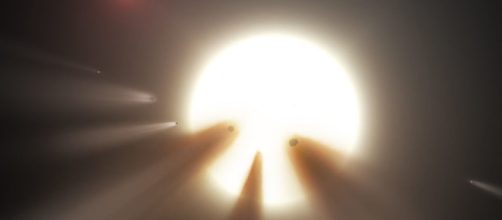According to Phys.org, astronomers around the world are scrambling to turn their telescopes on a star called KIC 8462852, also known as Boyajian's star or Tabby’s star. The star, which has been observed since 1890, was studied by a team led by Dr. Tabby Boyajian at Yale University. In 2015, the Yale Team announced something strange about the star. While most stars dim and brighten periodically, when a planet moves between them and Earth, Boyajian's star dims in an unpredictable manner and seems to have done so since the first observations. During one dimming episode, light from the star decreased by 22 percent.
A Jupiter-sized object would have caused just a three percent dip.
What is happening in the Boyajian's star system?
All sorts of theories have arisen as to why Boyajian's star is dimming in the way it is. Scientists have theorized everything from swarms of comets to dust clouds surrounding the star. The most intriguing possibility is that the dimming is caused by something called an Alien Megastructure. The idea is that an advanced alien civilization is building a Dyson sphere around Boyajian's star. Such a megastructure would enclose the star, allowing it to absorb its light to be converted to energy. Beings would live on the inside to the sphere with an available surface area sufficient to support hundreds of billions of inhabitants.
Which theory makes the most sense?
In fact, none of the theories being advanced to explain what is happening at Boyajian's star entirely explains what is going on. While the idea of an alien megastructure is exciting, most scientists shy away from suggesting that it is the most plausible answer. Proof of intelligent life elsewhere in the universe would be a history-making development. No responsible person wants to make such an announcement without being absolutely sure. An attempt by the SETI Institute to use a radio telescope array to detect signals from Boyajian's star have come up empty. But that might mean that the aliens no longer use radio or related air communications technology.
What do the scientists hope to discover?
The astronomers who are now observing Boyajian's star will try to ascertain whether the current dimming event matches patterns observed in previously observed instances, including one noted by the Kepler Space Telescope. The scientists should be able to determine whether the dimming is being caused by a solid object or objects, or a gas cloud. At the end of the dimming period, the astronomers should have a greater understanding of what is happening 1,300 light years away.


